What Makes Pixar Great At What They Do?
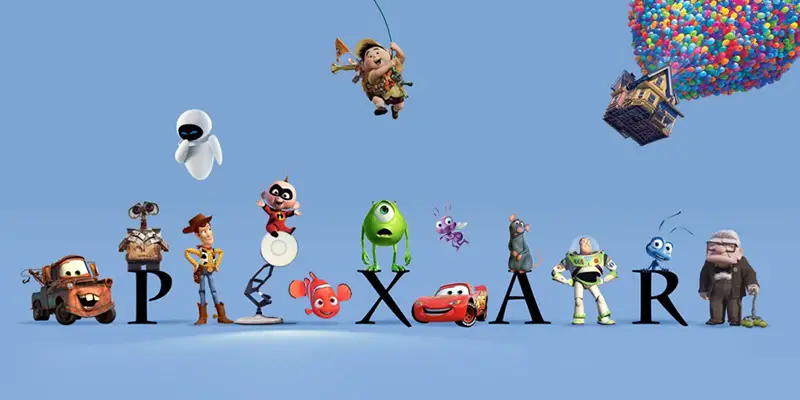
Sam is 25 years old from the West Midlands region…
Like a variety of genres in Hollywood, animation is a growing field that has been significant in various forms of media. There have been successful corporations across the globe that are not only skilled in putting hand-drawings and computer graphics to motion, but are also creative in their storytelling. Pixar Animation Studios is a vital example of an exceedingly successful animation company with an abundance of projects that have become cultural favourites. Based in Emeryville, California already establishes their place at the heart of Hollywood; but Pixar has always gone deeper than arguably the industry’s favourite animations, producing stories in film that become very powerful to audiences.
The question remains: how did the organisation that was once a hardware company called The Graphics Group become arguably the most successful animation corporation? This article looks at Pixar’s dominance in animation from its production processes to the significance of the finished projects themselves, and what value they have brought to Hollywood and popular culture.
Renovating Computer Animation and Disney Partnership
Before being completed and released on the big screen, animation was originally processed with each frame being hand drawn and merged together (refer to the classic Walt Disney animations). The technique may be traditional, but technological progressions have slowly degraded its relevance in contemporary cinema. In turn, animation has become dominated by computers. A key to Pixar’s success outside of storytelling is its ground-breaking contributions to computer animation. Their first short animation The Adventures of André and Wally B. (1984) was among their earliest efforts. More importantly, Toy Story (1995) became the first full-length feature to have been filmed in full computer animation.
According to an article on Weebly.com, Pixar’s dream was to produce the first computer-animated film. Following Toy Story’s mass critical acclaim, they continued to produce more animations that have pioneered the legacy of computer animation.
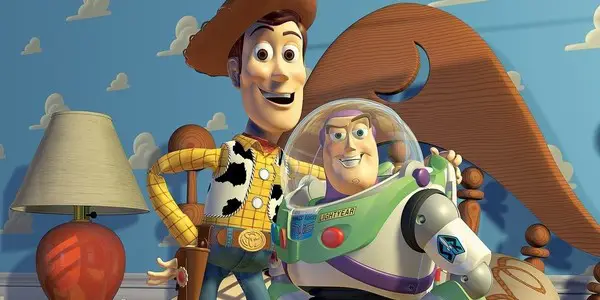
Pixar first began as a small company under Lucasfilm while working on certain films, such as Howard the Duck (1984) and Star Trek: The Wrath of Khan (1982), before being acquired by Steve Jobs, who began to formulate their connections with Walt Disney Pictures. At this point, Pixar were not acquired by Disney but were merely collaborative distributing partners, which would always increase marketing boosts.
Pixar was actually an independent company for a long time until Disney eventually purchased them in 2006 for $7.4 billion. However, as opposed to their other Disney animation films (i.e. Frozen, Tangled, The Lion King, Beauty and the Beast, etc.), Pixar’s main emphasis was its storytelling value. With the inner depth of the stories and their morals as well as being marketed under a corporation as large as Disney, it comes as no surprise to anyone that Pixar has grown into a popular industry.
Passion From Crew Members
Although George Lucas and Steve Jobs were known figures among Pixar in its early years, they now have a growing number of filmmakers and storytellers that have contributed to their success. Among these are John Lasseter, Andrew Stanton, Joe Ranft, Bob Peterson, Pete Docter and Lee Unkrich. Having a creative team is fundamental for Pixar, as the imaginative mindsets of each individual are fundamental in pitching their original stories and writing scripts.
According to a Time magazine article, Pixar co-founder Ed Catmull said: “put smart, passionate people in a room together, charge them with identifying and solving problems and encourage them to be candid.” Out of all sixteen Pixar films that we’ve seen so far, each of the six above individuals have had some involvements in each other’s projects. For example, Lasseter directed Toy Story, A Bug’s Life (1998) and Toy Story 2 (1999) with Stanton, Docter and Unkrich serving as either co-screenwriter or having an input on pitching the story. Andrew Stanton directed Finding Nemo (2003) and WALL-E (2008), while Docter and Peterson had pre-production involvement.
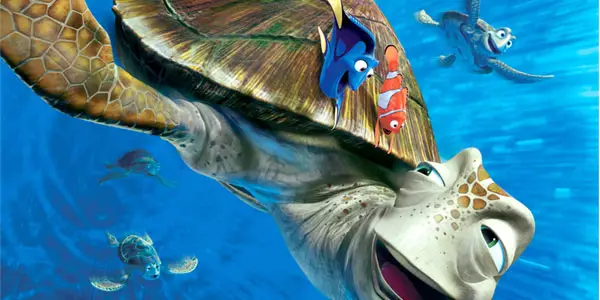
On the other hand, directors pitch their own ideas to Pixar and they utilise their production and storytelling values to that project. Brad Bird individually wrote and directed The Incredibles (2004) while later working on Ratatouille (2007) with Jan Pinkava, who directed Pixar’s Academy-Award winning short Geri’s Game (1998). In addition, Pixar often has a preference for certain crew members, similar to many studios. It is mainly the regular partnerships with music composers Randy Newman, Thomas Newman and Michael Giacchino which have enhanced Pixar’s trademark style. All of these composers received Academy Award recognition whilst with Pixar, with Randy Newman winning for Monsters Inc. (2001) and Toy Story 3 (2010) and Giacchino for Up (2009).
The most significant idea for Pixar was to have its own little creative group (Lasseter, Docter, Stanton, Unkrich, Peterson) and to all meet as one to create charmingly original storylines that have both a distant and relatable touch to modern society. Their works together are similar to the “Cahiers du Cinema” critics who became directors in France during the 1960s.
Imaginative Stories and Original Screenplays
A creative expertise that has made Pixar stand out against any other animation studio is its exceedingly original storylines that provide both visual enchantment and moralities in narrative meanings. The majority of their plots are often considered unexpected, with a fictional context being implemented into modern society settings. The idea is that they become as close to real-life as they do about fantasy escapism.
For example, Ratatouille is set in the centre of Paris, as we can see from landscape shots of the city sites, including the Eiffel Tower and Champs-Élysées. The angle that director Brad Bird takes from here is in the unexpectedly original story about a rat dreaming to become a chef. Within this fictional storyline, the film addresses the mesmerising scale that Paris brings to the local community, as well as an honest portrayal of its people.
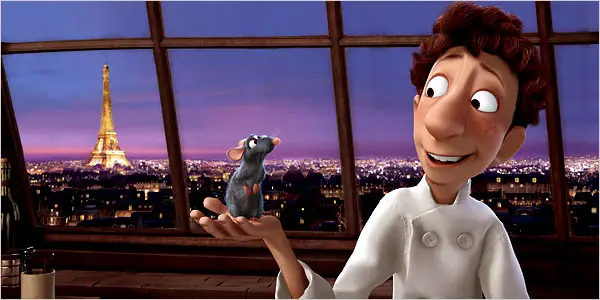
Other examples are in the Toy Story trilogy, Finding Nemo and Inside Out (2015). The surrounding world is entirely our normal Earth, but when we go into enough depth of the characters, we are placed into another world that is distinct from a human perspective. We have human characters in each of these films, but the main emphases are those of a different kind. Despite this, they are humanised with feelings while simultaneously portraying characteristics of their group.
Finding Nemo elicits a magical, imaginative and often funny representation of underwater life. The Toy Story trilogy does the same but only shows from the perspective of our toys and what life would be like if they really could move and express their feelings. Inside Out in particular is unique, as it takes place within the mind of a little girl, with emotions as the main characters; thereby raising the question – what if that is how our emotions work? As unlikely as it is, Inside Out portrays it as a magical and loosely educational trait of how we think and make decisions in our lives.
Before being whisked away into these tales, Pixar release taglines on posters or premise text to entice its promotional tactics. In its most recent feature The Good Dinosaur (2015), the teaser trailer’s central premise is: “what if the meteor that destroyed the dinosaurs billions of years ago, in fact, didn’t strike at all?” Set in an alternate timeline, The Good Dinosaur aims to show what the world would’ve been like between humans and dinosaurs should the latter have survived.
Other similar taglines include “The adventure takes off” for Toy Story and “After 700 years of doing what he was built for, he’ll discover what he was meant for” in WALL-E. The idea is to show Pixar’s skills on expressing meaning even before the films are released. Even certain quotes are still commonly used today, such as “Adventure is out there!” from Up and “To infinity and beyond!” from Toy Story.
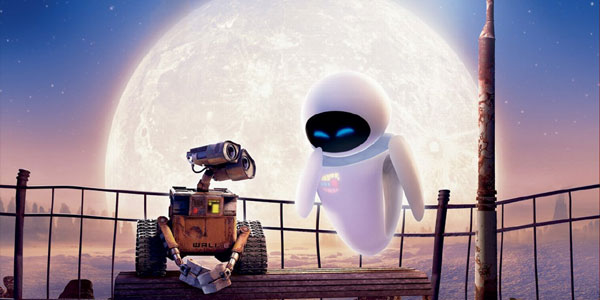
Narrative is a valuable asset to animation, as we do not see any actual performance onscreen, with only actors’ voices. Nevertheless, though, plot structures in Pixar films are a more important factor to their success that not so much distracts from their visual qualities but instead are an enhanced superiority.
Character Moralities
Speaking of moral principles and the structure of meanings in their stories, Pixar has examined lead and supporting characters from a variety of ages and cultural groups in different circumstances. In Monsters University (2013), Mike and Sulley attend higher education before meeting in Monsters Inc. The director Dan Scanlon explores phases of adolescence in both a realistic (regarding dreams and ambitions of going to university) and fictional way (purely because they’re actually monsters). While it is represented as an unofficial teen-comedy with similar humour, the film was executed nicely at a different angle for an even younger audience.
In Up, Carl and Ellie always wanted to fulfill their childhood dream to visit Paradise Falls in South America but due to the complications that life brings for them, they never were able to do it together. Sadly, Ellie eventually died of an unknown illness, leaving Carl a lonely widower. The opening sequences from Up are relatable in themselves, as each of the characters and their circumstances have their ties with people in general society. One spouse always passes away first out of all elderly married couples, and life really is a roller coaster.
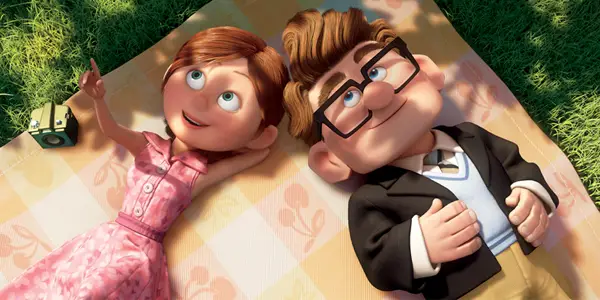
However, despite Carl never making it to Paradise Falls with Ellie, his resilience to visit there for her after she passed shows courage, even at an elderly age, to never give up on your dreams. Following this, Carl ventures in his house with the help of many balloons across to South America. Along the way, though, he meets Russell, Dug and Kevin; thereby creating a new life for himself after Ellie’s death. Ultimately, this shows an understanding that life must move on. Carl’s relationship with Ellie and his own decisions throughout the film are central to the moral significance that made Up so successful.
Perhaps the most important ties that Pixar has with their audience is through the character of Andy throughout the Toy Story trilogy, especially in the third instalment. When first released in 1995, Andy was a direct representation of all children growing up in the 1990s (including myself) and, in a similar way to stars of the Harry Potter franchise, these youngsters grew up alongside Andy. In Toy Story 3 when he reaches the age to bid farewell to childhood and hello to adult life, Pixar elicits the film’s emotional bonds to audiences experiencing similar circumstances, which eventually everyone has to go through.
Displaying emotions are a strong emphasis on Pixar’s success in terms of storytelling and character development. “Feeling” is a good keyword to describe the symbolic impact of every Pixar film, as they explore it from the standpoint of different beings in addition to humans. Toys have feelings, bugs have feelings, monsters have feelings, fish have feelings, superheroes and technology have feelings, vehicles have feelings, rats have feelings, robots have feelings, dogs have feelings, bears have feelings and dinosaurs have feelings. Pixar even go as to far as to explore – what if feelings have feelings?

No matter the being of the characters, they are all humanised and echo a momentous impact upon audiences to reflect on in their own lives. Pixar has always stood out for this attribute, and the film industry is now beginning to accept that, like Marvel and Disney, Pixar is becoming a growing shared universe.
Easter Eggs & Connections
No, this section does not refer to the Easter Bunny or the festive occasion. In cinema, Easter Eggs are to describe an intentional hint, message or inside joke that may overlap each of the films together. Examples of this could include a trademark director cameo in their projects, such as in Peter Jackson or Alfred Hitchc*ck’s films. Pixar has been known to drop their own Easter Eggs ever since they kick-started their short films. A particular Easter Egg seen in the vast majority of their films is the Pizza Planet truck. Originating from Toy Story, it is seen in every Pixar feature up to Inside Out.
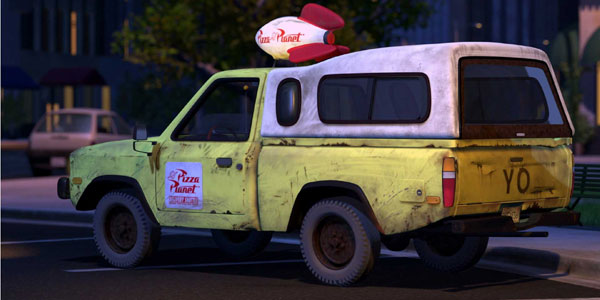
Another example is the ‘A113’ code, which serves as a reference to a classroom number at the California Institute of Arts, the organisation that started Pixar’s craftsmanship and creativity in animation. Similar to the Pizza Planet truck, the ‘A113’ symbol is seen either very clearly or very distinctly for barely a second. The idea of Pixar doing this and the symbolism that both of these Easter Eggs represent is their way of posting a stamp on their films, so to speak. This establishes that the films are connected, whether narratively or not, as argued in a theory by Jon Negroni.
Considering this, Pixar is well-known for linking their characters from different films to each other. Even in production of some of their projects, we have seen clear connections. For example, in their earliest films we see outtakes. How unique is that, though – outtakes and gags in an animated film? Not many animation companies have done that, so that makes Pixar stand out even more. That in itself shows Pixar’s creativity of humanising the characters within their worlds. Outtakes are seen in A Bug’s Life, Toy Story 2 and Monsters Inc.
Other Short Films
In addition to their successful feature films, Pixar produces a number of shorts each year, which they have done since The Adventures of André and Wally B. Their shorts are theatrically released before the feature film itself, and they usually aren’t associated with the feature film that they are screened with. Some examples include: Geri’s Game with A Bug’s Life, Day & Night with Toy Story 3, Presto with WALL-E and La Luna with Brave (2012). This is another trademark that entices audience anticipation in waiting to see a Pixar film – knowing that a short will be shown first.
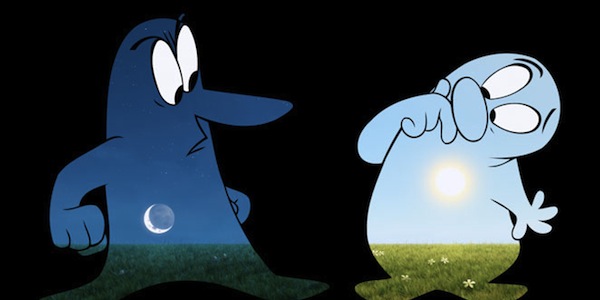
There are also some shorts that have been home-released with the films, and do have feature-related aspects. These include: Mike’s New Car with Monsters Inc, Jack-Jack Attack with The Incredibles and Riley’s First Date? with Inside Out. Even the way in which these short films are distributed for home-release are original from Pixar, as in various stores we can acquire the collections on separate DVDs and Blu-rays. They are simply called ‘Pixar Shorts: Vol 1’ and ‘Pixar Shorts: Vol 2’. Alongside the feature film releases, we can also get further glimpses at home of Pixar’s theatrical shorts and can enjoy exploring their original storylines as they continue to hit our screens.
Awards and Box Office Records
All of Pixar’s hard work and passion to their projects pay off. Although Cars 2 (2011) was considered Pixar’s first critical failure and The Good Dinosaur is currently being known as their first box-office failure, Pixar has broken records and received accolades along the way. Their competitors DreamWorks Animation and Sony have been successful in one project or another, but not many can match to Pixar’s on either a critical or financial level. Toy Story 3 overtook The Lion King as the highest grossing animation of all time in 2010, until it was dethroned in 2013 by Frozen. Maybe they could do it again with Toy Story 4 (2018)?
In terms of awards, Pixar has been nominated and victorious in a number of categories. Out of the fourteen years that Best Animated Picture has been contended, seven Pixar films have won the award (Finding Nemo, The Incredibles, Ratatouille, WALL-E, Up, Toy Story 3 and Brave). Others have been nominated for Best Original Screenplay (Toy Story, Finding Nemo, The Incredibles, Ratatouille, WALL-E and Up), Best Original Score and Best Original Song.
More importantly, though, Up and Toy Story 3 are two of the three animated features to have been nominated so far for Best Picture. The other is Beauty and the Beast. Considering this, the Academy’s awareness and appreciation of what Pixar’s true potential is in not only animation but film generally elicits further appraisal on part of the film industry. Alongside their feature films receiving potential nominations, there is also now the Best Animated Short Film category that will further glorify Pixar’s stories. Some of their shorts have been victorious, including Tin Toy, Geri’s Game and For The Birds.
Conclusion
From their first short film The Adventures of André and Wally B. (1984) to their latest feature The Good Dinosaur (2015), we have seen that Pixar has grown from an independent corporation to a growing universe that is progressively leaving an enduring legacy. Although now under the ownership of Disney, Pixar is still one of a kind and hasn’t faded away since their beginnings.
In terms of fandom, Pixar has taken an interesting turn that has never really happened before. We have fans of franchises, fans of actors and directors, fans of genres – but how many fans of actual studios can you name? Pixar may actually be one of the very few, as audiences and critics have become aware of the storytelling depth and animation styles that they have become associated with. Now in its 21st year of feature filmmaking and 32nd in shorts, Pixar has continuously produced liable projects that are uniquely original, from their pre-production to the execution in release.
Their future film projects include: Finding Dory (2016), Coco (2017), Toy Story 4 (2018) and The Incredibles 2 (2019).
What is your favourite Pixar film? Does Pixar really have any worthy competition now? Will a Pixar animation ever win Best Picture?
Does content like this matter to you?
Become a Member and support film journalism. Unlock access to all of Film Inquiry`s great articles. Join a community of like-minded readers who are passionate about cinema - get access to our private members Network, give back to independent filmmakers, and more.
Sam is 25 years old from the West Midlands region of the UK, who has a passion for the world of cinema and publishing. He is currently studying a postgraduate degree in Film & Television: Research and Production at the University of Birmingham. He is currently working in theatre and academic support.












